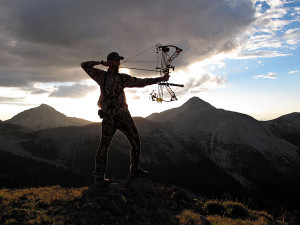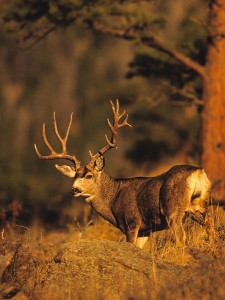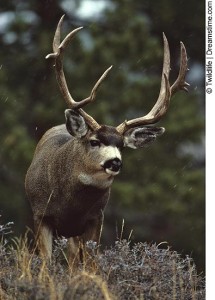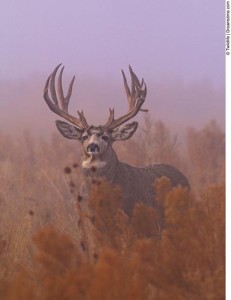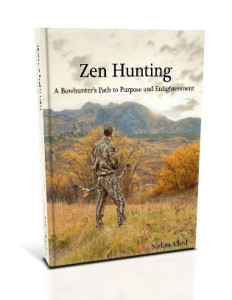Compound Bow Considerations
Compound bow technology has come a long way in just the last few decades. The brand of bow doesn’t really matter much anymore because any bow manufacturer still in business has to work hard to keep up with advancements in efficiency and reliability. Some of the more popular bow manufacturers include Mathews, Hoyt, Bowtech, PSE, Bear, Prime, Elite, and a few others. In this article we’ll look at the most important considerations when purchasing a new or used compound bow.
Compound Bow Price
You can expect to pay well over $1000 for brand new bare bow. If you’re on a budget you might consider a lightly used bow for half the cost of a new one. When parallel limb technology took off in the mid-2000s, bows became much quieter and more efficient. Therefore, any used compound bow manufactured after 2008 or 2009 should work fine, so long as it hasn’t been damaged in some way. Over the years I’ve bought a few great used bows on EBay or local classified ads. Older bows from the 80s and 90s with vertical limbs and round cams are much less efficient and noisy. This often results in animals jumping the string.
Compound Bow Cams
Modern compound bows are powered by either single or dual cams. Basically, single cam bows are easier to tune than dual cams. The major drawback to single cams is that they produce slower arrow speeds than dual cams. Dual cam bows (aka speed bows) are faster, but more difficult to tune because, a) both cams must roll over in perfect synchronicity, and b) extreme arrow velocity accentuates imperfections in shooting form, bow tuning, and broadhead design.
Tuning issues have been largely reduced in newer bows, but in my experience dual cam bows are still harder to tune. This has more to do with blistering arrow speed than bow tuning. The faster an arrow flies, the more it is negatively affected by poor form or wind planing.
There are two major factors to consider when choosing a compound bow: Draw length and draw weight.
Draw Length
Draw length is basically the distance from your extended palm to your face. The easiest way to measure your draw length is by holding a yardstick in your palms straight out from the base of your throat, and then measure the distance to the tips of your middle fingers. Alternatively, you can measure your wingspan by holding your arms straight out and measuring the distance from the tips of your middle fingers. Then divide this number by 2.5.
The draw length of your bow needs to be within half an inch of your measured length. You can get away with a slightly shorter draw length, but if your bow’s draw is too long it will throw you off balance.
Draw Weight
As for draw weight, you should pull as much poundage as you are comfortable with without straining your shoulders or fatiguing out after a few shots. Drawing a bow that’s too heavy can also lead to shoulder injuries that will shorten your bowhunting career.
Also, if your bow is too heavy it can be impossible to draw back when you are cold or fatigued. This is something I’ve experienced personally while hunting in wintertime. That being said, a bow that’s too light won’t transfer enough energy to the arrow and will result in wide sight pin spacing and less accuracy. It can also result in less penetration or pass-through shots.
Carry Weight
Aside from draw weight and length, the bow’s carry weight should be considered. As they say, “a heavier bow is a steadier bow.” However, an extreme backcountry bowhunter might consider a lightweight carbon bow. Carbon bows are more expensive than aluminum, but weigh as much as a pound less. If you are stuck with an aluminum bow you can always reduce weight by choosing lightweight accessories made from carbon fiber or other composite materials. My current hunting bow is aluminum, but I keep it light by using a composite quiver, stabilizer, rest, and bow sight.
Bow Height
Another consideration when purchasing a compound bow is the axle–to-axle length (or ATA). If you have a long draw length—basically anything over 28 inches—a longer axle-to-axle bow is more forgiving of form issues because it has a wider string angle. The only drawback to tall bow is when hunting in wide open or low brush country where a taller bow will be more visible as you raise or draw your bow. Unless you have a very long draw length (say, 30 inches or more), I recommend a shorter ATA between 28-30 inches.
Final Thought
No matter what bow, arrow, and broadhead combination you shoot, just remember that shot placement is more important than speed or anything else. You don’t need a pass-through shot to drop a big animal. If your arrow is placed in the right spot, then speed and kinetic energy are secondary factors.

